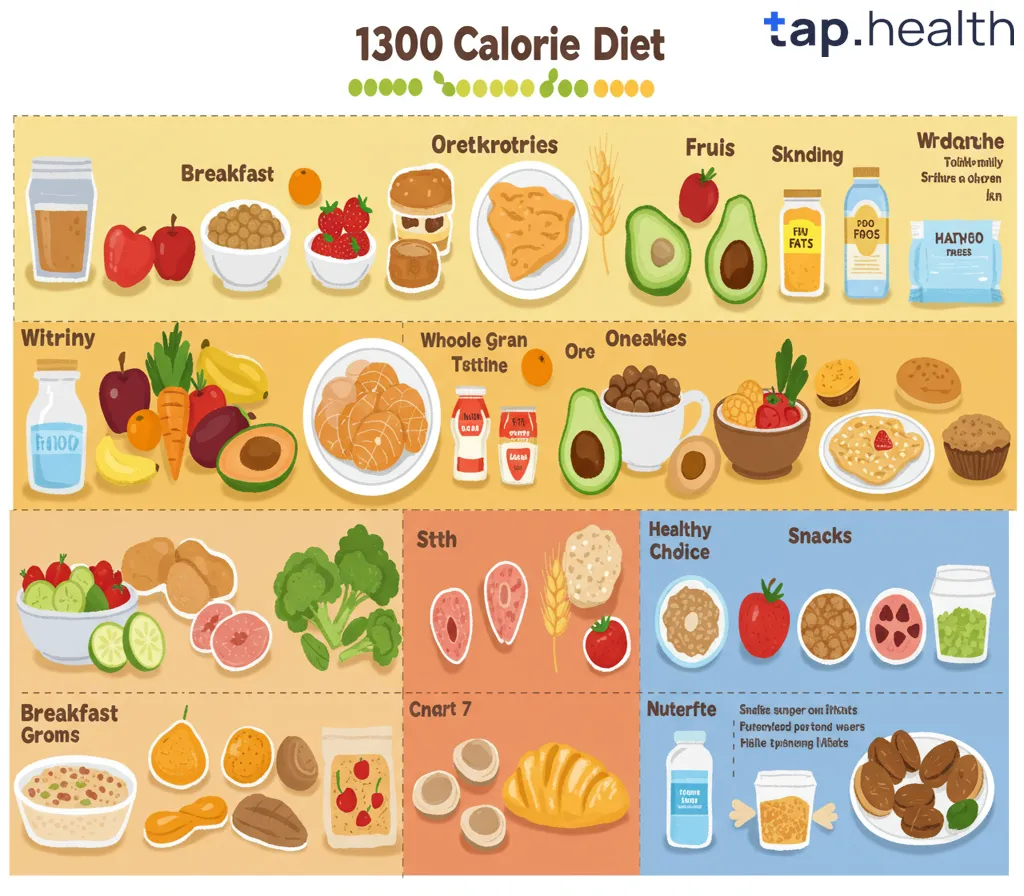For people living with diabetes, making the right food choices is crucial to maintaining healthy blood sugar levels. Caesar salad, a popular dish loved for its creamy dressing and crispy lettuce, is often thought to be a healthy choice. But is Caesar salad really good for diabetic patients?
In this comprehensive guide, we’ll answer that question, explore the nutritional profile of Caesar salad, and provide tips on how to make it more suitable for a diabetic-friendly diet. Whether you love Caesar salad or are just curious about how it fits into a diabetic meal plan, this article will provide everything you need to know.
What is Caesar Salad?
Before diving into whether Caesar salad is good for diabetic patients, let’s first understand what makes up a traditional Caesar salad.
A classic Caesar salad typically consists of the following ingredients:
- Romaine lettuce: A crisp, leafy green that forms the base of the salad.
- Croutons: Toasted bread cubes, usually made from white bread, which add crunch and texture.
- Caesar dressing: A creamy dressing made from ingredients like egg yolks, anchovies, garlic, lemon juice, Parmesan cheese, and olive oil.
- Parmesan cheese: A hard, grated cheese that adds a salty and nutty flavour.
Although the combination of these ingredients is delicious, there are several factors to consider when deciding if this dish is appropriate for people with diabetes.
Nutritional Content of Caesar Salad
Let’s take a closer look at the typical nutritional values of a traditional Caesar salad. These values can vary depending on portion size and the dressing used, but a typical Caesar salad (without any modifications) contains:
1. Calories
A serving of Caesar salad can range from 300 to 500 calories, depending on the dressing and toppings. The calories mainly come from the dressing, croutons, and cheese, all of which are energy-dense ingredients.
2. Carbohydrates
Caesar salad contains about 10–20 grams of carbohydrates per serving. The bulk of these carbohydrates come from croutons (which are made from bread) and the sugar in the dressing. Carbohydrates are one of the main factors that affect blood sugar levels, so it’s essential to watch their intake.
3. Fats
The dressing used in Caesar salads is typically high in fats, particularly saturated fats. Saturated fats can increase the risk of heart disease, which is especially important for people with diabetes, as they are more prone to cardiovascular issues. A serving can contain 20–30 grams of fat, depending on the amount of dressing used.
4. Protein
Caesar salad is not a significant source of protein. It may contain a small amount from the cheese and dressing, but for the most part, Caesar salad is low in protein. Protein is important for blood sugar control and muscle maintenance, so adding a protein-rich topping like grilled chicken can make the salad more balanced.
5. Sodium
Caesar salad is often high in sodium due to the cheese, dressing, and croutons. Too much sodium can contribute to high blood pressure, a common complication of diabetes. A single serving of Caesar salad can contain up to 700 mg of sodium or more, depending on the size and ingredients.
Is Caesar Salad Good for Diabetic Patients?
Now that we’ve looked at the basic components of a Caesar salad, let’s examine whether it’s suitable for diabetic patients. The key things to consider for people with diabetes are carbohydrate content, fat content, and sodium levels.
1. Carbohydrates and Blood Sugar
For diabetics, managing blood sugar levels is crucial. Since carbohydrates break down into glucose (sugar) in the body, they directly impact blood sugar levels. Traditional Caesar salad, with its croutons and dressing, can cause a spike in blood sugar due to its carbohydrate content.
However, this doesn’t mean you have to give up Caesar salad entirely. You can make adjustments to the ingredients to make it more diabetic-friendly. For example, opting for low-carb croutons or skipping the croutons entirely can reduce the carb count.
2. Fats and Heart Health
People with diabetes are at an increased risk for heart disease, which is why managing the intake of saturated fats is important. Traditional Caesar salad dressings are typically high in saturated fats due to ingredients like egg yolks and cheese.
To make the salad heart-healthier, you can switch to a lighter dressing made with healthier fats, like olive oil or avocado. Avoid using excessive dressing to cut down on fat intake.
3. Sodium and Blood Pressure
High blood pressure is a common issue for people with diabetes. The sodium content in Caesar salad can be high, primarily due to the dressing and cheese. Reducing sodium intake can help prevent further complications related to heart health. You can reduce sodium by using low-sodium dressings and avoiding store-bought croutons, which often contain added salt.
4. Protein for Blood Sugar Control
Protein helps stabilize blood sugar levels by slowing the absorption of carbohydrates. Traditional Caesar salad is low in protein, but you can easily add a protein source to your salad, such as grilled chicken, tofu, or salmon. This will help keep your blood sugar levels more stable after the meal.
How to Make Caesar Salad Diabetic-Friendly
Now that we’ve discussed the potential challenges with Caesar salad for diabetics, let’s look at how you can make it more suitable for your needs. Here are some simple changes to make your Caesar salad healthier and more aligned with a diabetic-friendly diet:
1. Skip the Croutons or Choose Low-Carb Options
The bread-based croutons in traditional Caesar salads are high in carbohydrates. You can either skip them altogether or make a low-carb alternative using ingredients like almonds, seeds, or kale chips. These options add crunch and texture without spiking your blood sugar.
2. Use a Healthier Dressing
Caesar dressing is often made with mayonnaise or egg yolks, which are high in saturated fats. You can make a healthier version by using Greek yogurt, olive oil, and lemon juice as a base. These ingredients are lower in fat and provide beneficial nutrients like vitamin E and healthy omega-3 fatty acids.
Simple Healthy Dressing Recipe:
- 1/4 cup Greek yogurt
- 2 tablespoons olive oil
- 1 tablespoon lemon juice
- 1 teaspoon Dijon mustard
- 1-2 cloves of garlic (minced)
- Salt and pepper to taste
Mix all ingredients and toss over your salad for a lighter, healthier dressing.
3. Add Protein
Make your Caesar salad more filling and blood sugar-friendly by adding a lean protein. Grilled chicken, turkey breast, tofu, or even boiled eggs are great options. Protein slows the digestion of carbohydrates, helping prevent sharp spikes in blood sugar.
4. Add More Vegetables
Increase the nutritional value of your salad by adding more non-starchy vegetables. Try including spinach, avocado, cucumber, or tomatoes. These vegetables are low in carbs and rich in fibre, helping to improve digestion and control blood sugar levels.
5. Limit Cheese
While cheese adds flavour, it can also contribute to high fat and sodium levels. Opt for a modest amount of Parmesan or consider using a lower-fat cheese like feta. You can also skip the cheese entirely for a lighter option.
Benefits of a Diabetic-Friendly Caesar Salad
By making these simple adjustments, you can still enjoy the flavours of Caesar salad while keeping your blood sugar levels in check. Here are the key benefits of a diabetic-friendly Caesar salad:
1. Better Blood Sugar Control
By reducing carbs and adding more protein and fibre, you’ll experience better blood sugar regulation after your meal. The inclusion of healthy fats and a lighter dressing will help keep your blood sugar stable.
2. Improved Heart Health
The changes you make to the salad can also improve heart health, as you reduce the intake of saturated fats and sodium. Healthier fats like those from olive oil and avocado can promote a healthy cardiovascular system.
3. Fuller for Longer
Adding protein to your Caesar salad will make you feel fuller for longer, preventing unnecessary snacking and helping you maintain a healthy weight. This is important for managing diabetes, as excess weight can make blood sugar control more difficult.
Real-Life Scenario
Ravi, a 45-year-old diabetic, often eats salads for lunch. He loves Caesar salad, but he noticed his blood sugar spiked after eating the traditional version with croutons and creamy dressing. By switching to a smaller portion, skipping croutons, and using a light dressing, his post-meal sugar levels became more stable while still enjoying his favorite salad.
Expert Contribution
Nutritionists explain that Caesar salad is not inherently bad for diabetics, but portion control and ingredient choices matter. Excessive dressing, cheese, or croutons can turn a healthy meal into a high-calorie, high-carb dish. Choosing lean protein, more vegetables, and minimal dressing is key for blood sugar management.
Recommendations Grounded in Proven Research and Facts
- Use lean protein: Chicken, shrimp, or tofu improves satiety and controls blood sugar.
- Limit carbs: Reduce or skip croutons to avoid sudden blood sugar spikes.
- Control dressing: Homemade or low-fat dressing helps lower sugar and calorie intake.
- Add fiber: Extra vegetables help slow down sugar absorption.
- Portion wisely: A moderate serving keeps calories and carbs manageable.
- Balance meals: Pairing the salad with a small serving of whole grains or fruit can maintain energy without spiking sugar.
How Tap Health Helps Diabetics Manage Their Health
Tap Health is an AI-powered diabetes management app created for Indian users to simplify daily health tracking. It helps monitor blood sugar, manage carbohydrate intake, and maintain overall wellness with a single, user-friendly platform.
Why Tap Health Is Valuable for Diabetics
Managing diabetes can be complicated, but Tap Health provides tools and insights that make it easier to stay on track:
Meal-Based Carb Tracking – The app allows you to log meals or take a photo, then calculates the carbohydrates, calories, and portion sizes, including traditional Indian dishes.
Glucose Monitoring – Keep track of your blood sugar readings and discover patterns that show how meals and lifestyle choices affect your levels.
Routine Reminders – Set alerts for medications, meals, and glucose checks to maintain consistency without hassle.
Tailored Health Advice – Tap Health uses AI to analyze your data and offer personalized recommendations for diet, exercise, and blood sugar control.
Localized Diet Support – Get access to a database of Indian foods, regional recipes, and culturally relevant meal plans.
Insightful Progress Reports – Monitor your HbA1c and glucose trends over time through clear, easy-to-read charts and reports.
Expert Guidance – Connect with certified doctors and dietitians for advice and support directly within the app.
Frequently Asked Questions (FAQ) on Is Caesar Salad Good for Diabetic Patients? A Simple, Smart Guide
1. Can diabetics eat Caesar salad?
Yes, diabetics can eat Caesar salad, but traditional versions can be high in carbs, fats, and sodium. By making some simple adjustments, such as using a lighter dressing, skipping the croutons, and adding protein, you can make it more suitable for a diabetic-friendly diet.
2. What can I use instead of croutons in Caesar salad?
Instead of croutons, you can use seeds, nuts, or kale chips for added crunch. These options are lower in carbs and can make the salad more blood-sugar friendly.
3. How can I make Caesar dressing healthier?
To make Caesar dressing healthier, use Greek yogurt instead of mayonnaise and incorporate olive oil, lemon juice, and garlic for added flavour. This will reduce the fat content and provide healthy nutrients.
4. Can I add chicken to Caesar salad for more protein?
Yes, adding grilled chicken is an excellent way to increase the protein content of your Caesar salad, helping to stabilise blood sugar levels and making the meal more filling.
5. Is Parmesan cheese bad for diabetics?
Parmesan cheese is not necessarily bad for diabetics, but it should be used in moderation due to its high sodium and fat content. You can use a smaller amount or opt for a lower-fat version of cheese to make the salad healthier.
Conclusion
Caesar salad can be part of a diabetic-friendly diet if you make a few smart adjustments. By reducing the carbs, using a healthier dressing, adding protein, and increasing vegetable content, you can enjoy a delicious and satisfying salad without compromising your health. Remember, diabetes management is all about balance, and with these simple changes, you can continue to enjoy your favourite meals while keeping your blood sugar levels in check.
So, the next time you’re craving a Caesar salad, try these tips and enjoy a healthier, glowing version that’s perfect for your diabetes management plan!


